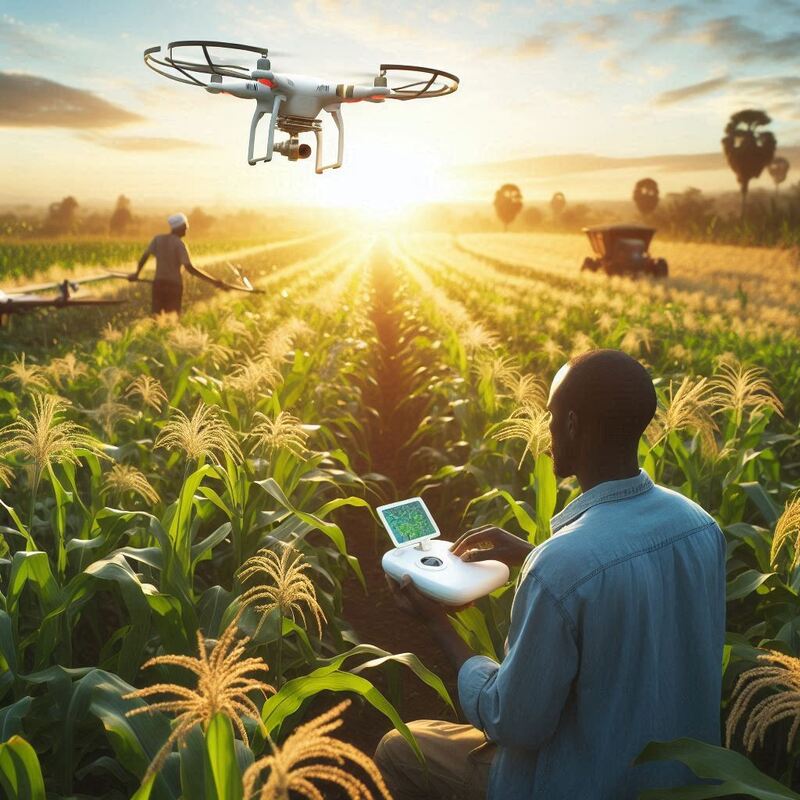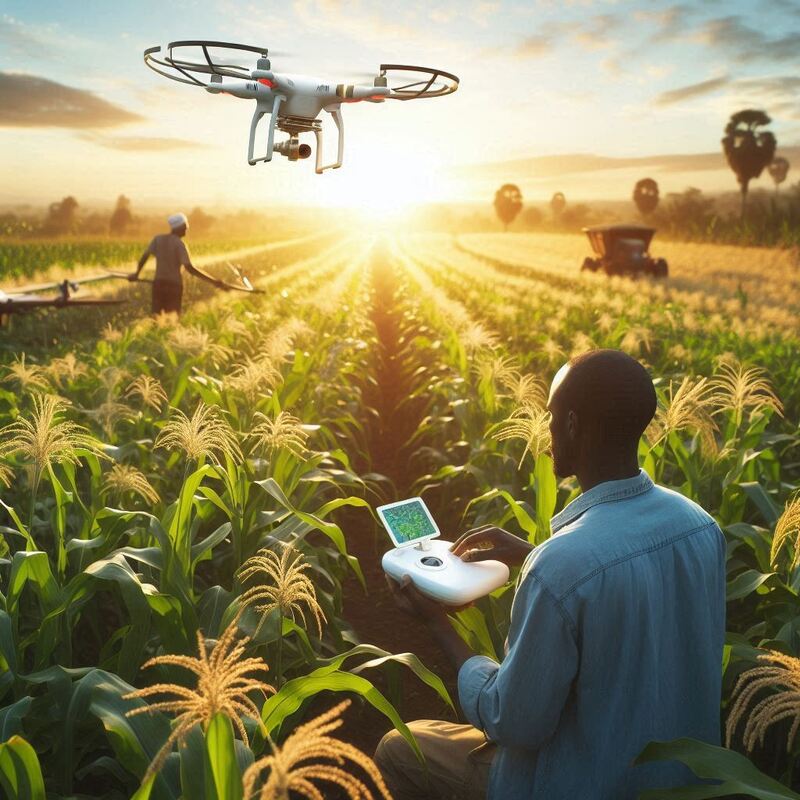
BEST DRONES FOR CROP MONITORING: A COMPREHENSIVE REVIEW FOR AFRICAN AGRIPRENEURS
In the dynamic world of agribusiness, staying ahead of the curve with cutting-edge technology can make all the difference. Drones, or unmanned aerial vehicles (UAVs), are revolutionizing crop monitoring, providing farmers with detailed insights into their fields, improving efficiency, and boosting yields. For agripreneurs in Nigeria and across Africa, investing in the right drone can be a game-changer. Here’s a comprehensive review of the best drones for crop monitoring, complete with verifiable examples from Nigeria and the rest of Africa.
1. DJI Phantom 4 RTK
Overview: The DJI Phantom 4 RTK is renowned for its precision and advanced imaging capabilities. It features a high-resolution camera with real-time kinematic (RTK) technology, offering centimeter-level accuracy.
Key Features:
- RTK Module: Provides high-precision data for detailed mapping and analysis.
- 20 MP Camera: Captures high-resolution images and 4K videos.
- Flight Time: Up to 30 minutes, suitable for covering large areas.
In Kenya, the DJI Phantom 4 RTK has been employed by agribusinesses to monitor crop health, assess irrigation needs, and plan harvesting schedules. Farmers have reported significant improvements in crop management and yield predictions.
2. Parrot Bluegrass Fields
Overview: Designed specifically for agricultural use, the Parrot Bluegrass Fields drone offers an all-in-one solution for crop monitoring. It includes multispectral sensors that help in analyzing plant health.
Key Features:
- Multispectral Sensor: Captures RGB and NIR images to monitor crop health.
- Flight Time: 25 minutes, with a range of up to 2 kilometers.
- User-Friendly: Easy to deploy and operate, making it ideal for farmers with minimal tech experience.
In Nigeria, some agripreneurs using the Parrot Bluegrass Fields drone have seen a marked improvement in detecting crop diseases early, allowing for timely interventions that save entire fields from potential losses.
3. senseFly eBee X
Overview: The senseFly eBee X is a fixed-wing drone that excels in covering extensive areas efficiently. It’s known for its versatility and adaptability to various agricultural applications.
Key Features:
- High Coverage: Can cover up to 1,200 hectares in a single flight.
- Multiple Sensor Options: Compatible with a range of cameras, including multispectral and thermal sensors.
- Durability: Designed to withstand harsh agricultural environments.
In South Africa, large-scale farms utilize the senseFly eBee X for comprehensive crop surveys, mapping soil variability, and optimizing input applications. This drone has helped reduce input costs and increase overall farm productivity.
4. DJI Agras T20
Overview: The DJI Agras T20 is a robust agricultural drone designed for spraying applications. It’s equipped with a high-capacity tank and advanced spraying system.
Key Features:
- 20-Liter Tank: Capable of covering large fields efficiently.
- Precision Spraying: Features RTK GPS and radar systems for accurate spraying.
- Durability: Built to withstand tough agricultural conditions.
In Ghana, the DJI Agras T20 is being used to apply fertilizers and pesticides precisely, reducing wastage and ensuring even coverage. Farmers have noted improved crop health and yield quality thanks to this technology.
5. Yuneec H520
Overview: The Yuneec H520 is a hexacopter designed for commercial applications, including agriculture. It offers stability, precision, and a range of camera options.
Key Features:
- Hexacopter Design: Provides stability in adverse weather conditions.
- Interchangeable Cameras: Options for thermal, RGB, and multispectral cameras.
- Flight Time: Approximately 28 minutes, suitable for medium to large farms.
In Tanzania, the Yuneec H520 has been instrumental in monitoring crop growth stages, identifying stress areas, and managing irrigation. This has led to more efficient water use and healthier crops.
Conclusion
Drones are transforming the agricultural landscape by providing precise, real-time data that enables better decision-making. For agripreneurs in Nigeria and across Africa, investing in the right drone can lead to substantial improvements in crop monitoring and overall farm management.
By choosing from top models like the DJI Phantom 4 RTK, Parrot Bluegrass Fields, senseFly eBee X, DJI Agras T20, and Yuneec H520, farmers can leverage advanced technology to enhance productivity, sustainability, and profitability. Each of these drones offers unique features tailored to various agricultural needs, ensuring that there is a suitable option for every type of farm operation.
This detailed review provides invaluable insights into the best drones for crop monitoring, showcasing how advanced technology can revolutionize agribusiness in Africa. Implementing these solutions can significantly boost your farm’s efficiency and output. Share this article with fellow agripreneurs and help foster a technologically advanced and thriving agricultural community across Nigeria and Africa.


